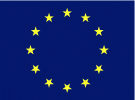M4CO2
|
EU : M4CO2 |
|
M4CO2 is a large-scale collaborative research project within the 7th European Framework Programme for Research and Technological Development (FP7/2014, Grant Agreement n° 608490). 16 industrial and academic partners from 8 European countries have formed a consortium combining leading expertise in catalysis, membranes, polymers and reaction engineering. |
|
|
|
Coordination : Freek KAPTEIJN, TU Delft Start date : January 2014 Next project meeting : 5-6 December, Sofia |
|
The idea |
|
The key objective of the M4CO2 project is to develop and prototype Mixed Matrix Membranes based on highly engineered Metal organic frameworks and polymers (M4) that outperform current technology for CO2 Capture (CO2) in pre- and post-combustion, meeting the energy and cost reduction targets of the European SET plan. By applying the innovative concept of M4 by a consortium of world key players, continuous separation processes of unsurpassed energy efficiency will be realized as a gas-liquid phase change is absent, reducing the energy penalty and resulting in smaller CO2 footprints. Further, gas separation membrane units are safer, environmentally friendly and, in general, have smaller physical footprints than other types of plants like amine stripping. In this way this project aims at a quantum leap in energy reduction for CO2 separation with associated cost efficiency and environmental impact reduction. The developed membranes will allow CO2 capture at prices below 15 €/ton CO2 (≈ 10-15 €/MWh), amply meeting the targets of the European SET plan (90% of CO2 recovery at a cost lower than 25€/MWh). This will be underpinned experimentally as well as through conceptual process designs and economic projections by the industrial partners. By developing optimized M4's, we will combine:
The main barriers that we will take away are the optimization of the MOF-polymer interaction and selective transport through the composite, where chemical compatibility, filler morphology and dispersion, and polymer rigidity all play a key role. Innovative areas of the project will be the first systematic, integral study into this type of membranes with investigations at all relevant length scales; including the careful design of the polymer(s) and the tuning of MOF crystals targeting the application in M4’s and the design of the separation process. |
|
The Partners |
|
M4CO2 involves 16 consortium partners embracing industry and academia from 8 EU countries
|
|
Our role in the project |
|
Our main role in the project is to characterize the adsorption properties of MOFs and polymers for the CO2 related applications. We are also looking to develop simple methods to obtain ideas about uptake diffusion. We plan to combine this data to obtain key properties and pointers to chose the most appropriate MOF and polymer for the applications chosen here. Philip coordinates the workpackage dealing with Adsorption and Diffusion Fundamentals. |
|
Our Publications in M4CO2 |
|
 To know more about the project go to
To know more about the project go to